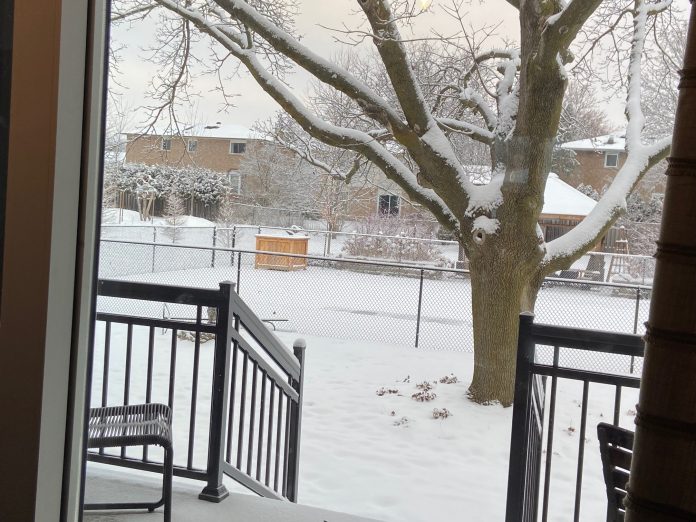Moving house is an adventure.
In 2003, Mark and his wife Mary built their dream home in the country, an adventure indeed. At the time they vowed never to build a house again, until they were ready to move back to the ‘burbs two years ago and did it once more.
They were inspired by a vision for a new home in the suburbs of Markham, where building a smaller home on a large, 1960’s one acre lot seemed like a splendid idea.
Building a home during a pandemic was its own adventure. Pleading with trades to come to work and the escalating materials costs is a story for another time.
Then there was the garden. Moving to a large lot made perfect sense to Mark, who saw the mostly treeless property as a blank canvas. He could plant trees of his own choice, create a pollinator garden, and attract beneficial wildlife like butterflies, native bees, and hummingbirds. And a food garden with an apple orchard of 16 trees, raspberries, grapes, asparagus, rhubarb and all of the annual vegetables the space would hold.
And he would save the one giant, 70-year-old maple that dominated the back yard. It is a magnificent Norway maple that stands 15 metres high. It provides dense shade over the house and deck providing a cooling effect equal to a large air conditioner.
Indeed, even as many readers might poo poo saving an “invasive tree”. Indeed, Norway maples are designated as such by Ontario Department of Agriculture, when over 40% of the Toronto tree canopy consists of Norway maples. They grow well in the polluted air of the city, sequester carbon, and produce oxygen along with the best of them. But they also send their seeds into the woods to compete with the native trees and flora. So, if he had a choice, Mark would prefer a Sugar maple or better still a native oak. But when you inherit a senior tree, it is what it is.
To save the monster tree they had to build the garage a few metres south of the existing root zone, which required a trip to the committee of adjustment for a variance. The Committee of Adjustment is a good place to go if you enjoy a nap. In this case, a three-month delay in the building permit process, to announce to neighbours that the garage would be located a bit south of theirs, changing the site lines a bit.
The local councillor Karen Rea sent an e mail to Mark, praising their decision, “At last, someone who wants to save a tree and not cut it down!”
With no objections, they were able to move forward with their plan.
The roots of the old tree were squeezed between the concrete wall of an existing swimming pool and a concrete foundation of a metre high knee wall. “This won’t hurt a bit” Mark whispered to the tree as a backhoe removed all of the restricting stone and concrete from around its root structure. Protected by a wall of plywood, as per the Markham tree protection by law, construction took place with a minimum of disturbance to the tree’s roots.
Then, once the house was built and the foundation backfilled, Mark consulted with a soil and tree expert, Derek at Authentic Tree Care in Keswick who recommended “activated mulch” be spread over the root zone of the tree.
Then, Mark added generous quantities of compost tea, from Crooked Farmz in Toronto, as per instructions from proprietor Sean Smith.
And next? We wait. What will Mark’s tree think of the enhancements made to its root zone? Now that it has more room to grow, will it thrive?
True, nothing will change the fact that it is a Norway maple, but hey. Better a pig in a poke than a poke in the eye with a sharp stick. Even from a more desirable native species.
Mark Cullen is an expert gardener, author, broadcaster, tree advocate and Member of the Order of Canada. His son Ben is a fourth-generation urban gardener and graduate of University of Guelph and Dalhousie University in Halifax. Follow them at markcullen.com, @markcullengardening, and on Facebook.


